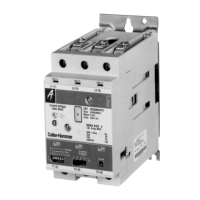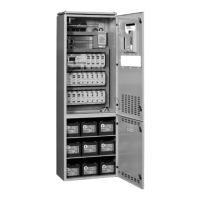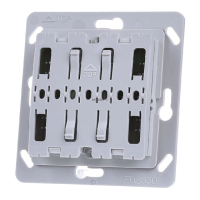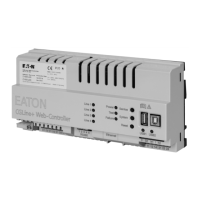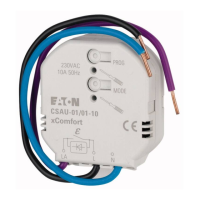IB01602009E For more information visit: www.eatonelectrical.com
Instruction Booklet
Effective: April 2006 Page 3
ATC-300 Automatic
Transfer Switch Controller
Designed to meet the needs of markets worldwide, the
ATC-300 Controller:
• Is a UL Recognized Component
• Complies with UL 1008/ CSA 22.2-178
• Meets the Intent of UL 991
• Meets IEC 1000-4-2, 1000-4-3, 1000-4-4, 1000-4-5, 1000-4-
6, and 1000-4-11
• Meets CISPR 11, Class A
• Complies with FCC Part 15, Class A
• Meets European Standards Conformance (CE mark)
The ATC-300 Controller provides an unmatched degree of pro-
grammed flexibility to address the needs of any system. It oper-
ates from all system voltages between 120 and 600 Vac, single-
phase and 3-phase, at 50 or 60 Hz. In addition, a period of no
control power operation is provided. The ATC-300 Controller
monitors the condition of the 3-phase line-to-line voltage and fre-
quency of both the Source 1 and Source 2 power sources. It can
also be programmed for single-phase operation. The ATC-300
Controller provides the necessary intelligence to insure that the
switch operates properly through a series of programmed sensing
and timing functions.
A standard ATC-300 Controller will:
• Monitor Source 1 and Source 2 power source voltages and fre-
quencies;
• Provide undervoltage monitoring of the Source 1 and Source 2
power sources;
• Permit customer programming;
• Display real-time and historical information;
• Permit system testing;
• Store customer/factory established parameters in nonvolatile
memory; and
• Provide faceplate source status indications.
1.4 Glossary
With respect to their use within this document and as they relate
to ATS and controller operation, the following terminology is
defined.
Available
A source is defined as “available” when it is within its undervolt-
age/overvoltage/ underfrequency/overfrequency (if applicable)
setpoint ranges for the nominal voltage and frequency setting.
Connected
Connected is defined as when the input is shorted by an external
contact or connection.
Failed or Fails
A source is defined as “failed” when it is outside of the applicable
voltage and frequency setpoint ranges for the nominal voltage
and frequency setting for a time exceeding 0.5 seconds after the
time delay emergency fail (TDEF) time delays expires.
Failsafe
Failsafe is a feature that prevents disconnection from the only
available power source and also forces a transfer or re-transfer
operation to the only available power source.
Re-Transfer
Re-transfer is defined as a change of the load connection from
the Source 2 to the Source 1.
Source 1
Source 1 is the primary source (normal source, normal power
source, or normal).
Source 2
Source 2 is the secondary source (emergency source, emergency
power source, emergency, standby, or backup source).
Source 1: Failed or Fails
Source 1 is defined as “failed” when it is outside of its undervolt-
age/overvoltage/ underfrequency/overfrequency (if applicable)
setpoint ranges for the nominal voltage and frequency setting.
Source 2: Failed or Fails
Source 2 is defined as “failed” when it is outside of its undervolt-
age/overvoltage/ underfrequency/overfrequency (if applicable)
setpoint ranges for the nominal voltage and frequency setting for
a time exceeding 0.5 seconds after the TDEF time delay expires.
Transfer
Transfer is defined as a change of the load connection from the
Source 1 to the Source 2 power source, except when specifically
used as “Transfer to Neutral”.
Transfer to Neutral
Transfer to neutral is defined as when the load circuits are dis-
connect from both the Source 1 and Source 2 power sources.
Unconnected
Unconnected is defined as when the input is not shorted by an
external contact or connection.
V
IN, RMS
Refers to the operating input voltage (Vac, RMS).
1.5 Functions/Features/Options
The primary function of ATC-300 Controller is to accurately mon-
itor power sources and provide the necessary intelligence to oper-
ate an ATS in an appropriate and timely manner. In addition, the
ATC-300 Controller provides programming through the device’s
faceplate or communication option.
1.5.1 Operational Simplicity
From installation to programming to usage, the ATC-300 Control-
ler was designed with operational simplicity in mind. Only one
style needs to be considered, regardless of input/output require-
ments or system voltages and frequencies. The ATC-300 Con-
troller provides the functionality of numerous other devices
combined in one package that mounts in 6.5 by 8.5 inches of
panel space.
The user-friendly front panel interface simplifies routine opera-
tion, programming, data presentation, and setting adjustments.
An LCD-based display provides the flexibility of a back-lit display
for enhanced visibility. The operation of the front panel mem-
brane pushbuttons move the ATC-300 Controller display from
function to function or step to step within a function.
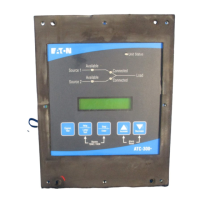
